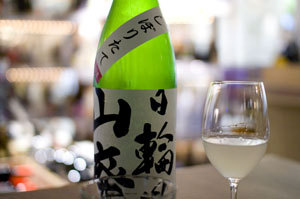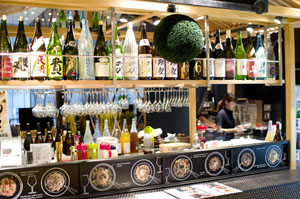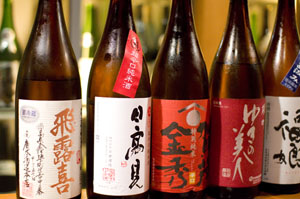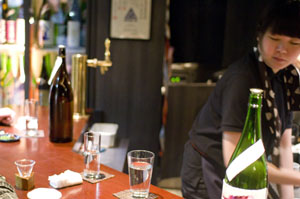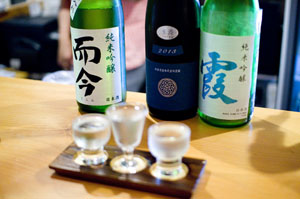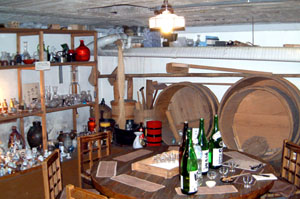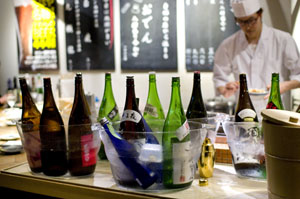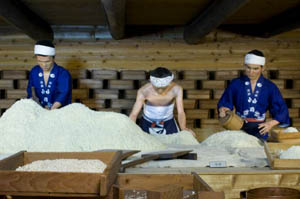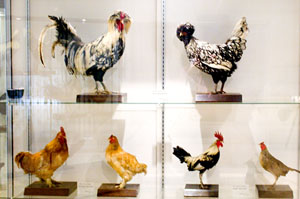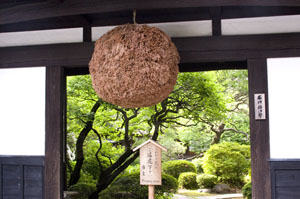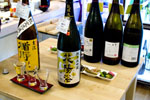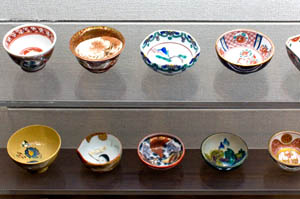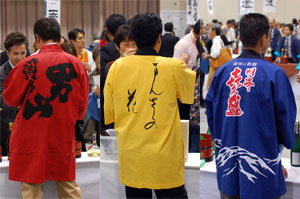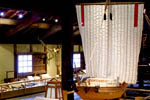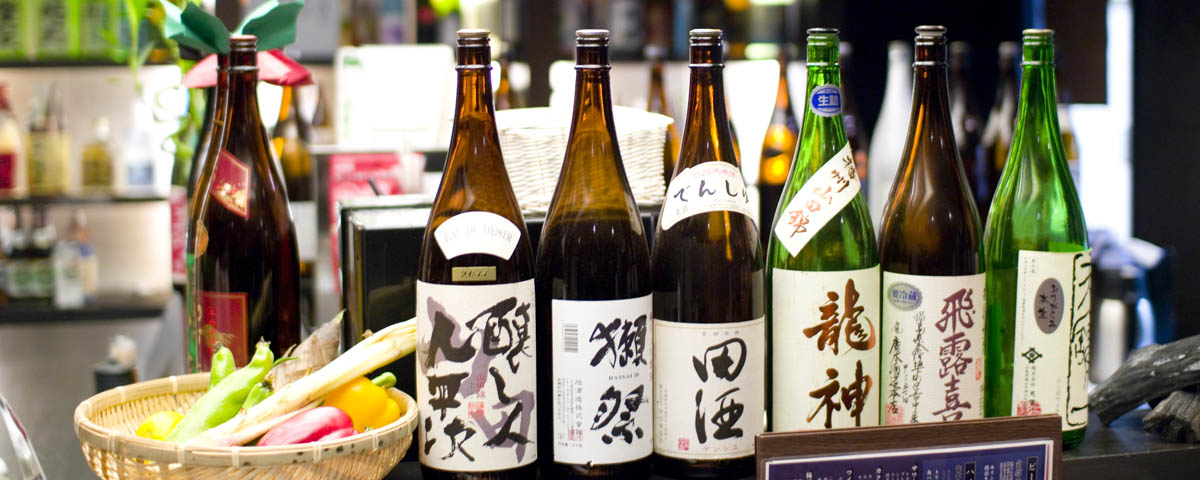
Drinking sake
Most Japanese restaurants and izakaya in Japan serve sake (called nihonshu in Japanese), but the quality and breadth of the selection can vary greatly. Smaller mom-and-pop shops and local neighborhood places might carry only one brand, but many modern izakaya these days tend to offer a reasonable selection of premium jizake by the glass. The word jizake (地酒) refers to regional brands from smaller breweries, and seeing the word on a shop sign or a menu is a clue that you're likely to find good sake there.
Some izakaya really take their sake seriously, and offer limited-edition seasonal sake from small breweries, with a list that changes monthly or weekly. These places can often be recognized by the presence of a sugidama (cedar ball) - a tightly bound bunch of cedar boughs clipped into a ball shape - hung near the entrance.
Inexpensive, mediocre sake is often served heated to mask the flavor. Premium sake is usually served cold, but certain high-quality sakes can also be served warm on occasion. If you're not sure, cold is usually the safer bet. Another rule of thumb - if there's only one brand on the menu and they ask if you want it hot or cold, it's usually best to stick with beer.
Some izakaya serve sake by the glass, and some serve it in thin-necked decanters called tokkuri or in similar vessels, in which case it is ordered in units called go. Ichi-go (one go) is 180ml (around 6 oz.), and is enough for several small cups for two people; if there are four or more at the table it's better to order one or more ni-go (two-go) containers.
The host (or whoever grabs the tokkuri first) will pour the sake into everyone's o-choko (small sake cup), after which someone will pour for the host. One tokkuri of sake divided among two or more people isn't a huge amount to drink, so you can try more than one type of sake during the course of a meal if you're so inclined.
Types of sake
Sake is divided into a number of categories based on how it's made, and these are described in the vocabulary section below. A few to note are nama, which is unpasteurized sake, often with a fresher, fruitier bounce; yamahai, a special brewing technique that results in a richer, gamier flavor; and nigori, generally sweet "cloudy" sake with unfermented rice particles that haven't been filtered out.
The sake section of a menu will typically list the brand name; the category and type of sake (e.g. ginjo, daiginjo, nama, etc.); the prefecture it comes from; the nihonshu number (roughly indicating how sweet or dry it is, with higher numbers being dry and lower numbers being sweet); and the price. As you try different sakes you may discover your own preferences for sweet or dry types and maybe particular prefectures. It may sound simplistic, but the price can also serve as a useful rough indicator of quality - craft sake isn't a world of with multi-billion-yen marketing campaigns, so the price generally reflects the work that goes into making it.
Where to try it
More about sake
- © Copyright Lobster Enterprises
- Privacy
- Bento.com top
- © Copyright Lobster Enterprises
- Privacy
- Bento.com top
- © Copyright Lobster Enterprises
- Privacy
- Bento.com top







